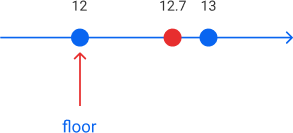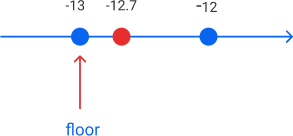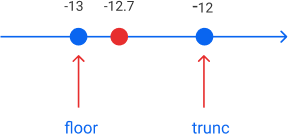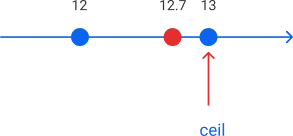How To Convert a Float to an Int in Python (original) (raw)
Summary: in this tutorial, you’ll learn how to convert a float to an integer.
Suppose that you have a float such as 20.3, and you want to convert it to an integer.
When you convert a float to an integer, you’ll have a data loss. For example, 20.3 may become 20 or 21.
Python provides you with some functions in the math module for converting from a float to an int, including:
- Truncation
- Floor
- ceiling
Truncation #
The trunc(x) function returns the integer part of the number x. It ignores everything after the decimal point. For example:
`from math import trunc
print(trunc(12.2)) print(trunc(12.5)) print(trunc(12.7))`Code language: Python (python)
Output:
12 12 12Code language: Python (python)
Similarly, the int() constructor accepts a float and uses truncation to cast a float to an int:
print(int(12.2)) print(int(12.5)) print(int(12.7))Code language: Python (python)
Floor #
The floor(x) function returns the largest integer less than or equal to x. For example:
`from math import floor
print(floor(12.2)) print(floor(12.5)) print(floor(12.7))`Code language: Python (python)
Output:
12 12 12Code language: Python (python)
The following shows how floor() function is applied to a positive number:

For positive numbers, floor(x) and trunc(x) return the same result. However, it’s not the case for negative numbers. For example:

The following picture shows how the floor() function is applied to a negative number:
`from math import floor, trunc
print(floor(-12.7)) print(trunc(-12.7))`Code language: Python (python)
Output:
-13 -12Code language: Python (python)
The following picture illustrates the difference between the floor() and trunc() function when you apply them to a negative number:

Ceiling #
The ceil(x) function returns the smallest integer greater than or equal to x. For example:
`from math import ceil
print(ceil(12.7))`Code language: Python (python)
Output:
13Code language: Python (python)
The following illustrates how the ceil() function is applied to a positive number:

This example uses the ceil() function for negative numbers:
`from math import ceil
print(ceil(-12.7)) `Code language: JavaScript (javascript)
Output:
-12
The following illustrates how the ceil() function is applied to a negative number:

Summary #
- Convert a float to an int always results in a data loss.
- The
trunc()function returns the integer part of a number. - The
floor()function returns the largest integer less than or equal to a number. - The
ceil()function returns the smallest integer greater than or equal to a number.
Was this tutorial helpful ?